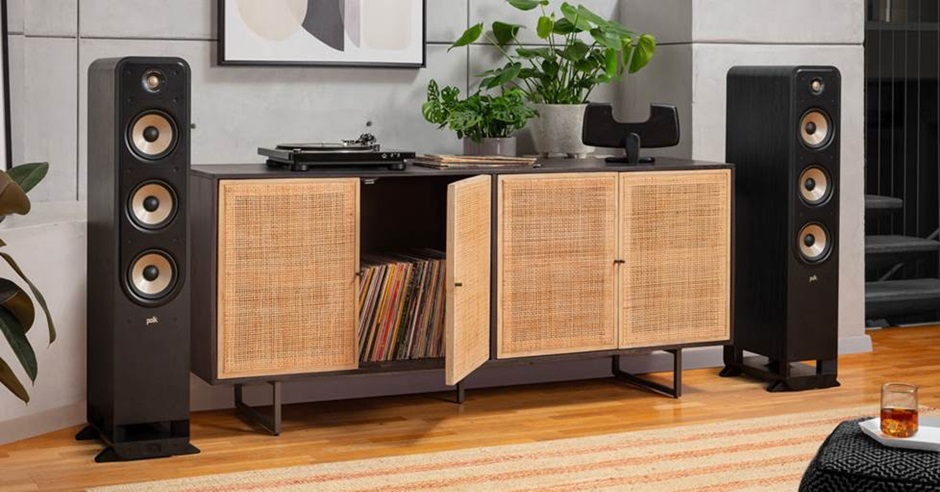
In today’s world, where audio quality can significantly impact our entertainment experiences, investing in quality home stereo speakers is essential for any audiophile or casual listener. This guide will explore the types of stereo speakers available, their features, and tips for optimizing your audio experience at home.
Understanding Home Stereo Speakers
Home stereo speakers are essential components in any audio setup, designed to reproduce sound accurately and enhance your listening experience. Unlike standard speakers, stereo speakers are engineered to deliver a more immersive soundstage, creating a richer, more dynamic audio environment. They are typically used in conjunction with audio sources such as turntables, CD players, or streaming devices to provide high-quality sound for music, movies, and gaming.
Types of Home Stereo Speakers
When considering stereo speakers for your home, it’s crucial to understand the various types available, each offering unique advantages:
1. Bookshelf Speakers
Bookshelf speakers are compact and versatile, designed to fit on shelves or stands. Despite their small size, they deliver impressive sound quality, making them an excellent choice for smaller rooms or limited spaces. They often feature a two-way design, combining a woofer for low frequencies and a tweeter for high frequencies, resulting in a well-balanced sound profile.
2. Tower Speakers
Tower speakers, also known as floor-standing speakers, are larger and provide a more powerful audio experience. These speakers often house multiple drivers, allowing for better sound dispersion and depth. Tower speakers are ideal for larger rooms and can fill the space with rich, full-bodied sound. Their design also makes them visually striking, adding to your home decor.
3. Satellite Speakers
Satellite speakers are small, lightweight speakers designed to be used as part of a surround sound system. While they lack the power of larger speakers, they excel in delivering clear, high-frequency sounds, making them perfect for creating an immersive audio experience in conjunction with a subwoofer for deep bass.
4. Subwoofers
While technically not stereo speakers, subwoofers play a crucial role in enhancing your audio experience. They focus on producing low-frequency sounds, adding depth and richness to music and movie soundtracks. Integrating a subwoofer with your stereo speakers can significantly improve the overall audio quality.
Key Features to Consider
When choosing home stereo speakers, several features can influence your listening experience. Here are some important factors to consider:
1. Sound Quality
The primary purpose of stereo speakers is to deliver high-quality sound. Look for speakers that provide a balanced frequency response, meaning they reproduce bass, mids, and treble evenly. This balance ensures that all elements of your audio content are heard clearly.
2. Power Handling
Power handling refers to the amount of power a speaker can handle from an amplifier without distortion or damage. It’s important to match the power ratings of your stereo speakers with your audio source for optimal performance. Speakers with higher power ratings can deliver louder sounds without sacrificing quality.
3. Sensitivity Rating
Sensitivity measures how efficiently a speaker converts power into sound. Speakers with higher sensitivity ratings (measured in decibels) require less power to produce the same volume as lower-rated speakers. This efficiency can be particularly beneficial in home audio setups where amplifier power may be limited.
4. Impedance
Impedance, measured in ohms, affects how much power your stereo speakers draw from the amplifier. Most home stereo speakers have an impedance of 4, 6, or 8 ohms. It’s important to ensure that your amplifier is compatible with the impedance rating of your speakers to prevent damage and ensure optimal performance.
Setting Up Your Home Stereo Speakers
Once you’ve chosen the right stereo speakers for your home, proper setup is crucial for maximizing your audio experience. Here are some tips for effective placement:
1. Positioning
Place your stereo speakers at ear level when seated for the best sound experience. Avoid placing them too close to walls or corners, as this can cause distortion and muddy sound. Ideally, speakers should be positioned at least a few feet away from walls to allow for optimal sound dispersion.
2. Distance and Angle
Experiment with the distance between your speakers to create an ideal stereo image. Typically, speakers should be placed about 6 to 10 feet apart, with the listener positioned in an equilateral triangle formation. Angling the speakers slightly towards the listening area can enhance the soundstage.
3. Subwoofer Placement
If you are using a subwoofer, its placement can significantly impact sound quality. Consider placing the subwoofer in a corner or along a wall to maximize low-frequency output. However, it may be beneficial to experiment with different locations to find the best sound for your space.
Conclusion
Investing in quality home stereo speakers is a significant step toward enhancing your audio experience. By understanding the different types of speakers, their features, and the best practices for setup, you can create an immersive audio environment that elevates your music, movies, and gaming to new heights. Whether you opt for bookshelf speakers, tower speakers, or a combination of stereo and subwoofer setups, the right choices can transform your listening experience into something truly exceptional.






